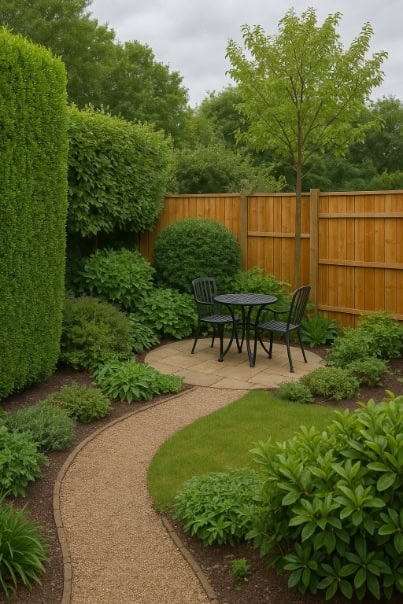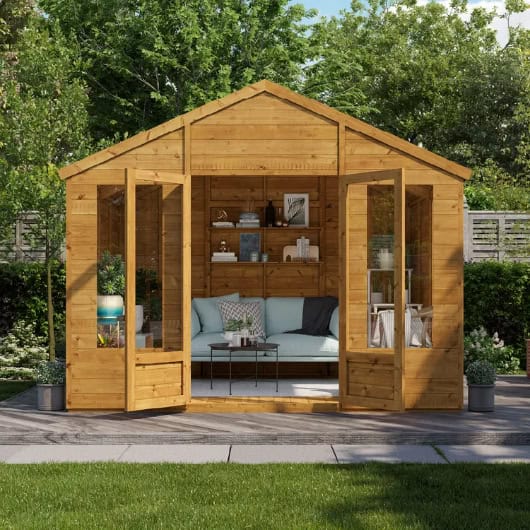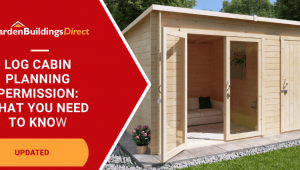Jump to:
Breeze can get in the way and spoil a nice day outside, but these garden wind block ideas have got you covered. Here are some simple ways to shelter your outdoor space and make it a nicer place to spend time.
Set Up Wind Barriers

The goal is to break up the airflow in your garden. This can be achieved with what might already be in your landscape, a.k.a. the natural wind barriers. These include hedges, shrubs, or small trees. Though they may take time to grow, they look good and do the job pretty well once they’re in.
But if you need solutions ASAP, the man-made approach is your best bet. Fences, trellises, or garden screens are worth looking at. Fencing gives you a solid cover and privacy. Meanwhile, trellises still let some air through, but you can grow climbers on them later. The same goes for these garden screening ideas.
Then you’ve got temporary options, like fabric windbreaks or garden mesh. These are handy when you only need a bit of extra shelter for a season or while getting your plants established. Again, they’re not a long-term fix, but they can take the edge off on blustery days.
Garden Wind Block Ideas for Plants
Some plants can cope with strong wind, but others struggle when they’re exposed. In such cases, strong winds can dry out the soil, snap stems, or uproot younger plants. You might also notice leaves looking shredded or plants leaning over, or suffering from wind scorch. Here are some wind blocking ideas to help protect your greenery:
- Install a fence or screen on the side where the wind comes from. Be careful not to block it completely, so let a bit of air through.
- Trellis panels are a good middle ground, too. Hedges or thick shrubs do the same job but in a more natural way.
- Windbreak netting, fabric, or mesh for smaller plants or veggie beds.
Rely on Your Garden Room

Sometimes, you don’t need to add anything new. What you’ve already got in the garden might be doing more than you realise. It could be your handy storage shed or your summer house retreat.
If yours is placed along the usual wind direction, you can use that to your advantage. Set up your lounging spot, such as your seating area, or raised beds, right next to the wall that is blocking the usual wind direction. The structure will then take the brunt of the gusts, and you get a calmer spot to enjoy.
Otherwise, you might want to think about moving it, but keep the structure’s weight in mind. Planning permission is also worth checking first to avoid headaches later. This guide on the minimum distance between shed and fence might help too.
Fingers crossed, you won’t need to move it.
Round-Up
Fences, hedges, trellis panels, even your shed or summer house, can all help take the edge off. Try a few of the ideas and see what works best. You might already have something in place that just needs a bit of repositioning. And if you end up needing something more permanent, a garden room is the way to go.
More tips right here: Preparing Your Shed For Strong Winds: The Essential Guide





